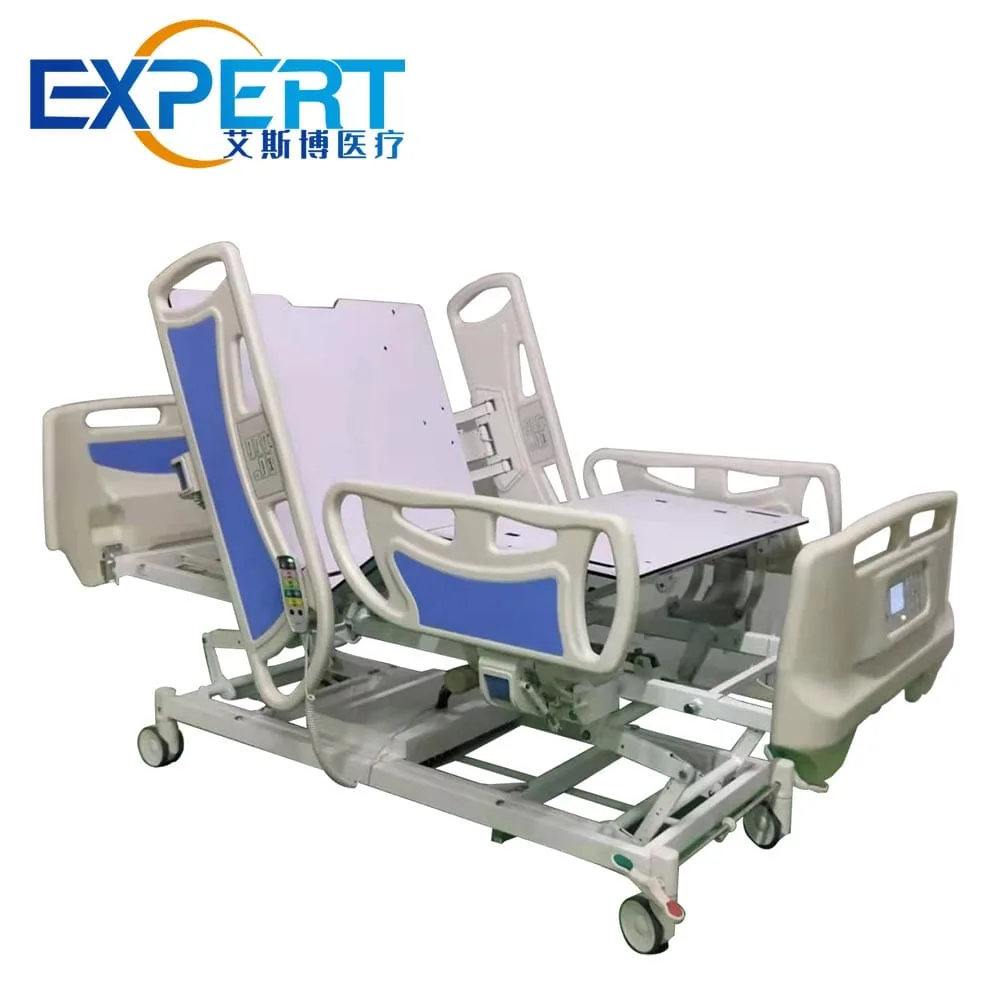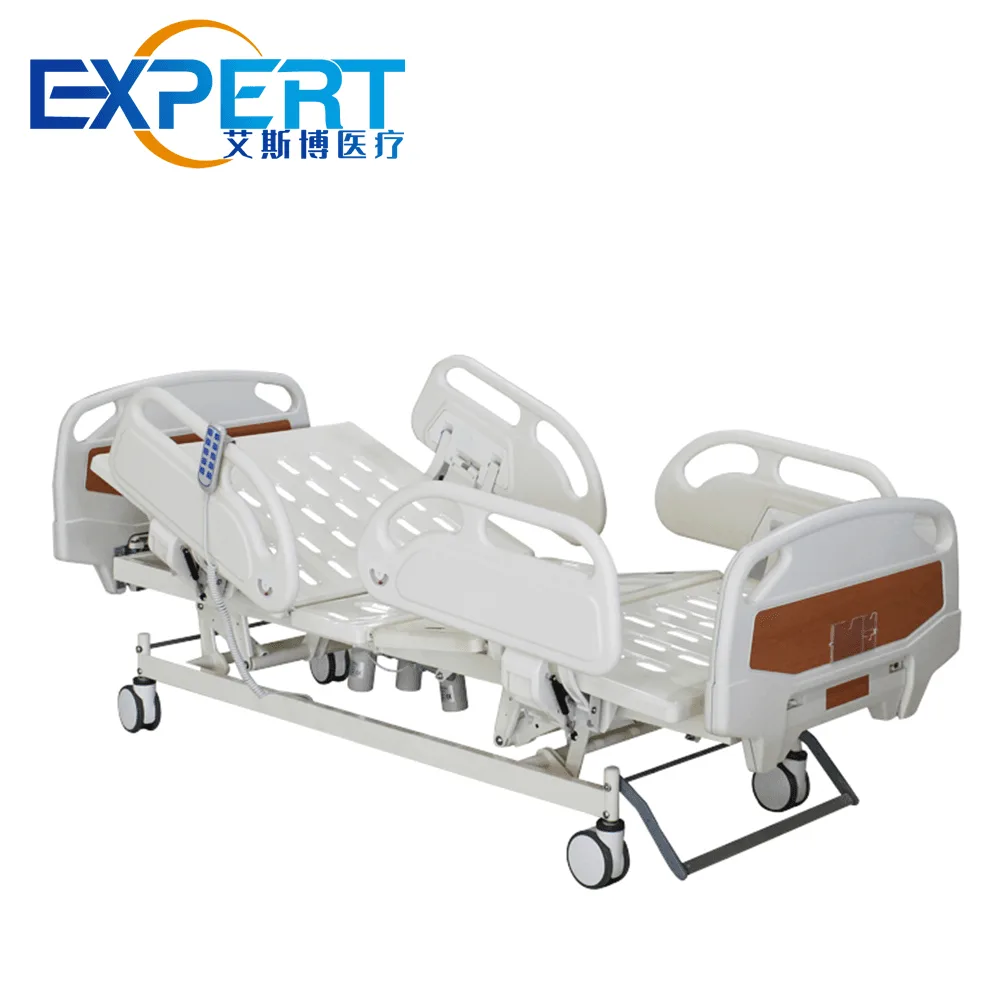Address
304 North Cardinal St.
Dorchester Center, MA 02124
Work Hours
Monday to Friday: 7AM - 7PM
Weekend: 10AM - 5PM
Address
304 North Cardinal St.
Dorchester Center, MA 02124
Work Hours
Monday to Friday: 7AM - 7PM
Weekend: 10AM - 5PM

This guide explores the nuances of standard hospital bed sizes and key considerations for selecting the right bed for various medical settings.
Welcome to My Blog!
Before we dive into the content, I’d love for you to join me on my social media platforms where I share more insights, engage with the community, and post updates. Here’s how you can connect with me:
Facebook:https://www.facebook.com/profile.php?id=100071234835011
LinkedIn:https://www.linkedin.com/company/74943205/admin/dashboard/
YouTube:www.youtube.com/@shandongexpertmedicalequip4695
TikTok:www.tiktok.com/@expertmedical
Now, let’s get started on our journey together. I hope you find the content here insightful, engaging, and valuable.

When it comes to healthcare facilities, the standard hospital bed size plays a critical role in ensuring patient comfort, safety, and efficient care delivery. Hospital beds are not one-size-fits-all; their dimensions are carefully designed to meet the diverse needs of patients, caregivers, and medical environments. Whether in operating rooms, intensive care units (ICUs), or general wards, understanding the standard hospital bed size is essential for healthcare providers, facility planners, and equipment suppliers. At Expert, a high-tech enterprise specializing in the research, development, production, and global distribution of OR and ICU equipment, we recognize the importance of tailoring bed sizes to optimize patient outcomes and operational efficiency. This guide explores the nuances of standard hospital bed sizes, their applications, and key considerations for selecting the right bed for various medical settings.
The standard hospital bed size is more than just a measurement—it directly impacts patient recovery, staff ergonomics, and facility space management. Properly sized beds ensure patients can rest comfortably, reduce the risk of pressure ulcers, and accommodate medical interventions. For healthcare staff, beds that adhere to standard dimensions facilitate easier patient transfers, adjustments, and access for medical equipment. Additionally, hospital bed sizes are designed to fit within the spatial constraints of hospital rooms, allowing for efficient use of space in high-traffic areas like ICUs or emergency departments. Expert’s commitment to producing high-quality hospital beds ensures that our products meet these critical requirements, supporting healthcare providers worldwide.
A key reason why hospital bed size is prioritized is its impact on patient comfort and safety. Beds that are too small may cause discomfort or restrict movement, while oversized beds can pose safety risks, such as falls, especially for elderly or mobility-impaired patients. Standard sizes are developed based on ergonomic studies and clinical guidelines to balance comfort with safety, ensuring patients can be positioned optimally during treatment or recovery.
Caregivers rely on hospital bed sizes to perform their duties efficiently. Beds that adhere to these dimensions allow nurses and doctors to access patients easily, adjust bed settings, and attach necessary medical devices like IV poles or monitors. Expert’s hospital beds are engineered with caregiver accessibility in mind, incorporating adjustable features that align with standard size specifications to streamline workflows in busy medical environments.


The standard hospital bed size varies depending on the type of bed and its intended use. Below, we outline the most common dimensions used in healthcare settings worldwide, ensuring compatibility with medical protocols and facility layouts.
General ward beds, used in non-specialized hospital rooms, typically measure around 36 inches wide by 80 inches long (approximately 91 cm x 203 cm). These dimensions accommodate most adult patients while fitting comfortably within standard hospital room layouts. Some ward beds may extend up to 84 inches in length to provide additional space for taller patients.
ICU beds, designed for critical care, often have slightly larger dimensions to accommodate advanced medical equipment and patient monitoring systems. A standard ICU bed size is typically 38 inches wide by 84 inches long (approximately 97 cm x 213 cm). These beds may also include features like adjustable height, tilt functions, and side rails, all of which are optimized within the standard size framework.
For patients requiring additional space due to larger body sizes, bariatric hospital beds are designed with a standard hospital bed size of 42 to 54 inches wide by 88 inches long (approximately 107–137 cm x 223 cm). These beds provide enhanced support and stability, ensuring safety and comfort for bariatric patients while maintaining compatibility with hospital infrastructure.
To provide a clearer overview, the table below summarizes the typical dimensions of standard hospital bed sizes across different bed types. These measurements reflect industry standards and are designed to meet the needs of various healthcare settings.
| Bed Type | Width (inches/cm) | Length (inches/cm) | Common Use Case |
|---|---|---|---|
| General Ward Bed | 36 / 91 | 80–84 / 203–213 | General patient care, recovery |
| ICU Bed | 38 / 97 | 84 / 213 | Critical care, advanced monitoring |
| Bariatric Bed | 42–54 / 107–137 | 88 / 223 | Bariatric patient support |
| Pediatric Bed | 30–36 / 76–91 | 60–75 / 152–190 | Pediatric care, smaller patients |
Choosing the right hospital bed size involves evaluating several factors, including patient demographics, medical requirements, and facility constraints. Healthcare providers must consider these elements to ensure beds meet clinical and operational needs.
The patient population served by a facility influences bed size selection. For example, pediatric hospitals require smaller beds, with hospital bed sizes ranging from 30 to 36 inches wide and 60 to 75 inches long. In contrast, facilities treating bariatric patients prioritize larger beds to accommodate higher weight capacities and body sizes.
Hospital room sizes vary, and the hospital bed size must align with available space. In compact rooms, smaller beds may be preferred to allow for medical equipment and staff movement. Expert’s design team works closely with healthcare facilities to recommend bed sizes that optimize space without compromising functionality.
Healthcare regulations, such as those set by the FDA or international bodies like ISO, often dictate standard hospital bed size requirements. These standards ensure beds meet safety, accessibility, and performance criteria. Expert’s hospital beds are manufactured to comply with global regulatory standards, ensuring reliability and safety for patients and caregivers.
Using beds that conform to standard hospital bed sizes offers numerous advantages for healthcare facilities, patients, and staff. These benefits underscore why standardization is a cornerstone of medical equipment design.
Standardized bed sizes ensure compatibility with accessories like mattresses, side rails, and linens. This interchangeability reduces procurement costs and simplifies inventory management for hospitals. Expert’s product line is designed to integrate seamlessly with standard hospital bed size accessories, enhancing operational efficiency.
Beds that adhere to standard hospital bed sizes are designed to promote healing and comfort. Proper dimensions reduce the risk of complications like pressure sores and improve patient mobility, contributing to faster recovery times. At Expert, we prioritize patient-centric design to support optimal clinical outcomes.
While standard hospital bed sizes offer many benefits, implementing them can present challenges, particularly in diverse healthcare settings.
Older hospitals may have rooms designed for non-standard bed sizes, making it difficult to adopt modern standard hospital bed sizes without costly renovations. Expert offers consultation services to help facilities transition to standardized equipment while minimizing disruption.
High-quality beds that meet hospital bed size requirements can be expensive, posing budget challenges for some facilities. Expert addresses this by offering a range of cost-effective solutions that maintain high standards of quality and compliance.

The healthcare industry is constantly evolving, and innovations in standard hospital bed size design are enhancing functionality and patient care. Expert is at the forefront of these advancements, incorporating cutting-edge features into our hospital beds.
Modern hospital beds often feature adjustable dimensions within the standard hospital bed size framework, allowing for customization based on patient needs. Modular designs enable facilities to adapt beds for different departments, from general wards to ICUs.
Smart beds equipped with sensors and connectivity features are becoming more common, even within standard hospital bed sizes. These beds monitor patient vitals, adjust positions automatically, and alert staff to potential issues, improving care delivery. Expert’s R&D team is actively developing smart bed solutions to meet the demands of modern healthcare.
Understanding standard hospital bed size is crucial for creating a safe, efficient, and patient-centered healthcare environment. From general ward beds to specialized ICU and bariatric models, the right bed size enhances comfort, supports clinical workflows, and optimizes space. At Expert, we are dedicated to providing high-quality hospital beds that meet global standards and address the unique needs of healthcare facilities worldwide. For more information on our innovative OR and ICU equipment, contact us today to explore our product range and find the perfect solution for your facility.
What is the standard hospital bed size for general wards?
The standard hospital bed size for general wards is typically 36 inches wide by 80 to 84 inches long, accommodating most adult patients.
Are standard hospital bed sizes the same globally?
While standard hospital bed sizes are similar worldwide, slight variations may exist due to regional regulations or manufacturer specifications. Always check local standards when procuring beds.
How do I choose the right standard hospital bed size for my facility?
Consider factors like patient demographics, room dimensions, and clinical requirements. Consulting with a trusted supplier like Expert can help you select the best bed size for your needs.